By Gouri Satya, Sr.Journalist
Killer plague had attacked Mysuru when ‘Saraswathi Vilasa Karnataka Nataka Sabha’ Drama Company was at its height
My previous article on the plague of 1896 published in these columns on April 1 ‘When Bubonic Plague hit Mysore State in 1896’ received an overwhelming response and was shared by many on the Facebook. They had appreciated the article as ‘timely and well documented.’ A few of them had added interesting points related to the deadly outbreak that took the lives in hundreds for three years.
The beating of a drum and warning people about the arrival of the “Maari”, which was the only means of communicating to the people about the attack of the dangerous diseases in those days, is still in vogue, mostly announcing some festival procession or mass feeding as part of it.
“Maari bandaite, hushaarappo”
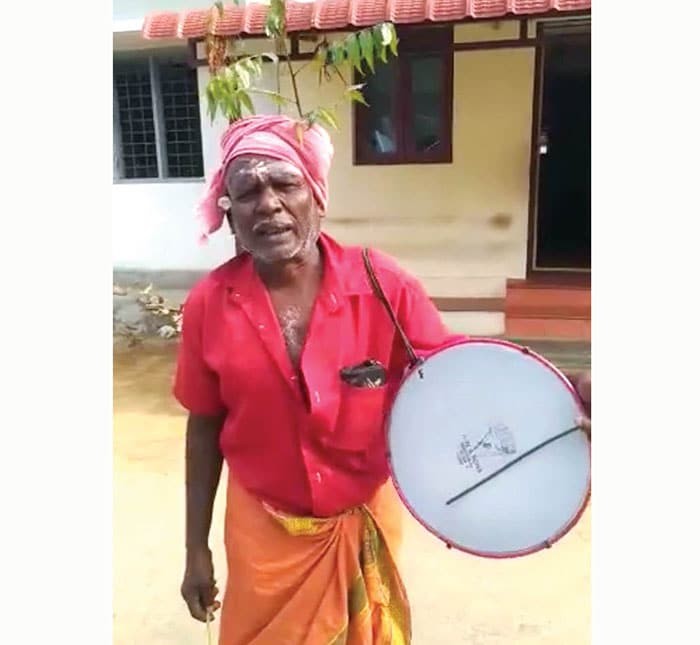
Here is a picture showing a dangura man in a Tamil Nadu village announcing the lockdown that was brought into effect a few days ago in the country. Referring to my mention of drummers going around a village or a town shouting “Maari bandaite, hushaarappo”, the tweet added that a dangura man warning the people of the deadly outbreak may seem anachronistic, but still needed and effective in remote villages was posted as part of one of the comments by Vidya Murali.
The dangura man in the clip had a neem twig stuck on his hairs. During the outbreak of diseases, it was common to see women with children carrying Thambittu and twigs with neem leaves in a plate on their heads to the Maari temple praying to the folk deity to ward off the evil. This practice is still prevalent in towns or villages and one can come across women with Thambittu and neem leaves in a plate near a Mariyamma temple, even in Mysuru.
Here I remember my school days when home-made neem paste with turmeric powder was applied on the forearm where vaccination had been done at two places. As a precaution during summer when small-pox was occurring, care was being taken to vaccinate people, which would often cause a little swelling and puss formation for 2-3 days.
Naale Baa
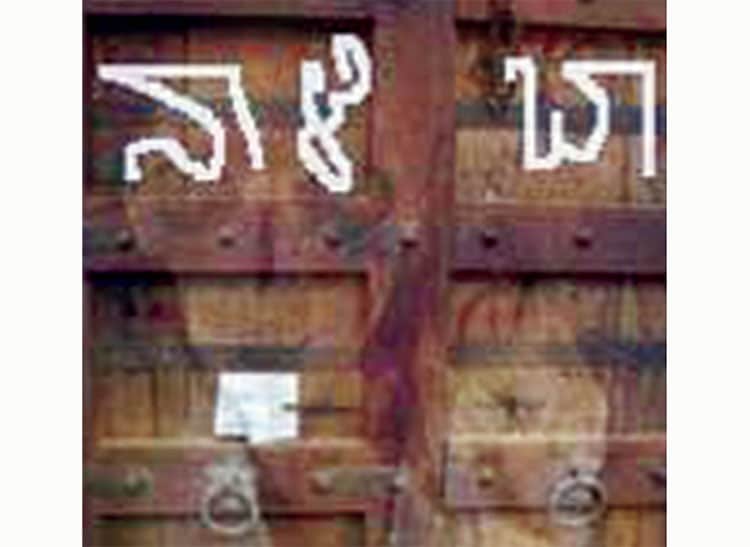
Another practice by some people were marking a ‘Naama’ on the door of their house and write below it in Kannada Naale Baa, asking the Maari not to come today. It would read the same every day — Don’t come today, but come tomorrow!
Picking up the thread on neem, Dinakar Konanur said, “Any Maari is warded off by neem. So they usually stick a twig in their hair and hang a bunch at the doorway. I remember an old ritual followed in our home earlier. Before packing for any long travel, a twig of neem was put in the empty suitcase first — Benediction to keep off illnesses!”
As we are aware, neem is being used traditionally to make medicine as it contains curative properties that could help kill bacteria and serve as a cure for many other ailments. Its medicinal qualities and uses are outlined in the earliest Sanskrit writings, like Kautilya’s Arthashastra of 4th century BC and ancient texts of Indian medicine like Charaka Samhita and Susruta Samhita. The tradition of tying neem twigs along with mango leaves at the entrance of a house during festivals is perhaps part of that belief.
Chinese connection
Another interesting comment was related to the tradition of worshipping of Mari or Mariamma. It read, “It was really interesting to discover that like our Mariamma shrines, Chinese folk religion has the Wen Shen, a deity responsible for the plague and their rituals “promoted fasting, interrupted social commerce, and required people to stay at home and keep their doors fastened against entry by evil spirits.” The “rituals” seem to be similar to our “lockdown” rules.”
Referring to my article, it said: “The article was very useful since we have been asking: How were epidemics fought then, how did people make collective decisions during a crisis? Today, our cities do not have the severe, unhygienic conditions as in the past, and yet, we seem to be in the same state today as then.”
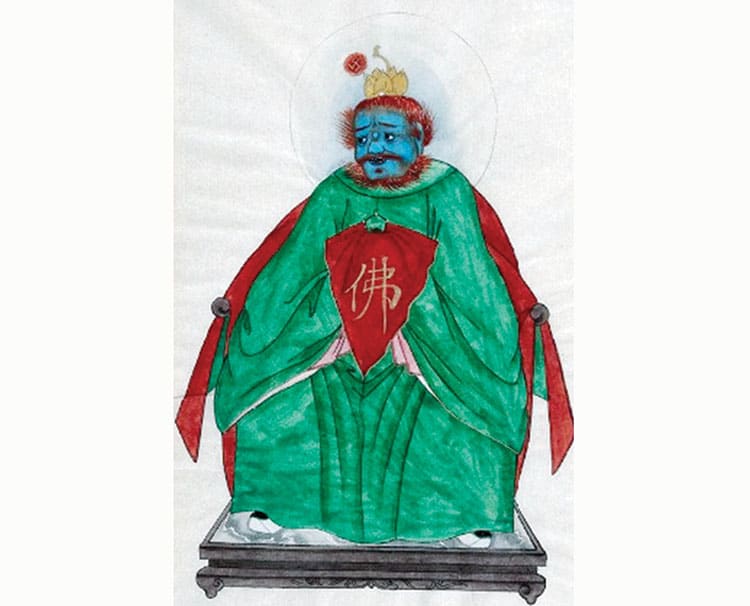
China’s Instant City
While searching in Google, he had found an interesting book: ‘The Shenzhen Experiment: The Story of China’s Instant City’ wherein it had been stated, “Only two sacred banyan trees believed to have been planted with instruction from Zheng. The trees were still adorned with red ribbons, fastened by local villages praying for Tianhou’s protection”. This was again an ancient ritual of worship of the sacred fig Aswatha or banyan tree.
Dinakar Konanur, whose forefathers have left behind some of the items they used during their days, had tagged me to his post in which he had attached a few images of old letters of 1899, 1902 and 1906, written to his great grandfather by his elder brother wherein mention is made of the deadly epidemic.
Letters during plague
One letter posted to Chikkamagalur dated 29.3.1899 said, “Unless plague leaves Mysore and its suburbs shortly, the poorer members of the bar [court] like myself will have to give up their profession for some time and take to some other service for their subsistence.”
Another letter of 1902 said, “The frequent outbreak of plague has largely unsettled my mind as also the profession.” A third letter posted on 30.11.1902 said, “We are camping out on account of the plague. There have been some fresh cases.”
These writings show how in those days people were worried about their jobs and earnings like today when the epidemic affected their lives and livelihood.
The birth of a composer
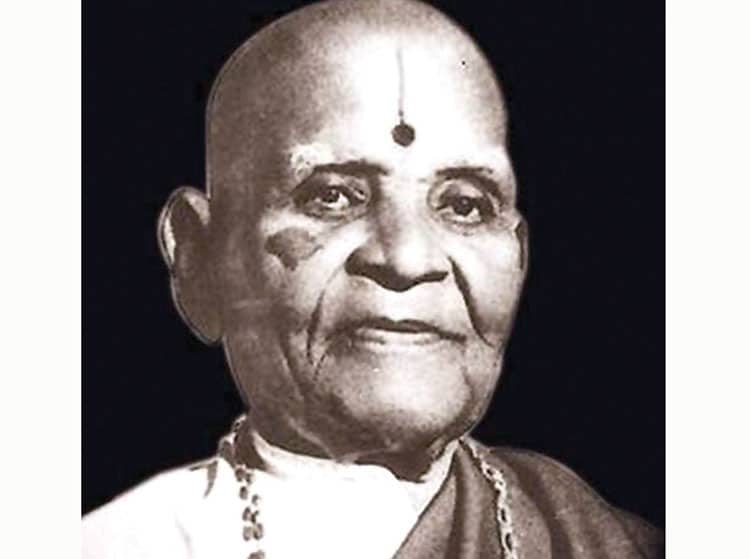
Taking up the same subject, Raja Chandra, son-in-law of Jayachamaraja Wadiyar, has posted an interesting episode relating to renowned composer Mysore M. Vasudevacharya under the caption “Bubonic plague and birth of a composer.” In one of his books, Vasudevacharya has recalled this incident and explained how a composer became in the early part of the last century.
During the great plague of 1905, most of the people who were within the Fort were shifted to temporary tents in what is known as Alanahalli, near Lalitha Mahal Palace. Vasudevacharya also found refuge there due to the proximity to an old Ursu gentleman, Gopala Raja Urs, who was contemporary of Vasudevacharya’s father.
Seeing the havoc caused by plague, Urs told him about the uncertainties of life and said it was better to leave something for posterity for which he will be remembered. To this, young Vasudevacharya said what was there to be left, when they were gone. Urs asked Vasudevacharya, whom he called Vasu, to stop joking and compose kirtanas in his name as he had experience in music and good knowledge in Sahitya. It was the duty of a scholar like him to follow the path set by the elders and make use of his learning to do something for posterity and justice to his knowledge. May be, Urs added his name will also be remembered with Vasu’s work.
This conversation left a deep impression on Vasudevacharya and the result was the composition, “Chintayeham Janakikantamsantatam.” The rest is history, recalls Raja Chandra, quoting from Vasudevacharya’s book.
Theatre movement in Mysuru
Another comment posted on Facebook recalled the tragic occurrence in the family, “It was during this plague the entire family of my father was wiped out except my grandfather who was working with MSM Railways. He resigned from the job and whatever he got he did sharaddha for the departed soul in Dharwad Shirahatti Wada which still exists.”
This comment brought to my mind a recorded tragic death of a famous dramatist in Mysuru during the days of Maharaja Chamaraja Wadiyar. Though the “Dashavatara Company” was staging dramas since 1814 in the Mysore Palace, it was Chamaraja Wadiyar who gave a big fillip to the theatre movement in Mysuru by establishing the Chamarajendra Karnataka Nataka Sabha in 1882.
Chamaraja Wadiyar’s contribution
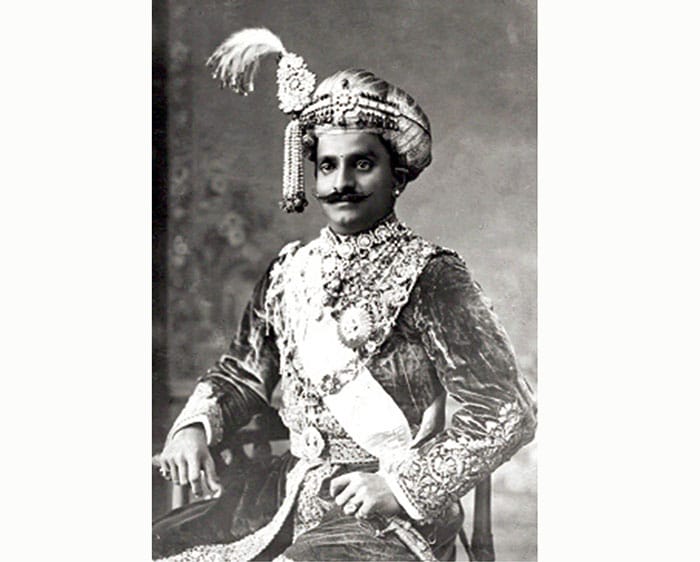
After ascending the throne, he opened the doors for Marathi and Parsi theatre companies to stage dramas in the Palace. Some of the well-known Sanskrit plays were translated into Kannada. Chamaraja Wadiyar had such excellent knowledge of the theatre he could even pin-point the lapses in performance.
At that time, Rangacharya of Mandya was also holding dramas under the auspices of the ‘Saraswathi Vilasa Karnataka Nataka Sabha’ established by him in Mysuru. This Sabha was as good as the Palace Company in staging dramas, if not better. Rangacharya and his associate Narasimhaiah were popular in the roles of Raja and Rani.
Though he hailed from a priest family of the Palace, Narasimhaiah had taken a keen interest in theatre activity. Besides looking attractive, he had an excellent voice and was gifted with talent, including in reciting poems from Kumaravyasa and Lakshmisha’s works as a Gamaki, he aptly fitted into the role of a queen. Both of them brought fame to the Nataka Sabha capturing the minds of the spectators.
After a few years, Rangacharya left Mysuru and the task of running the drama company fell on the shoulders of Narasimhaiah, which he did not hesitate to shoulder. He further carried forward the Sabha, established by Rangacharya, playing both the characters of ‘Raja’ and ‘Rani’. The dramas staged by him became so popular his Sabha could even compete with the Palace Company, though lacking adequate funds. He took his team to Bengaluru and Bellary and the plays he staged there brought more laurels.
When plague attacked Mysuru
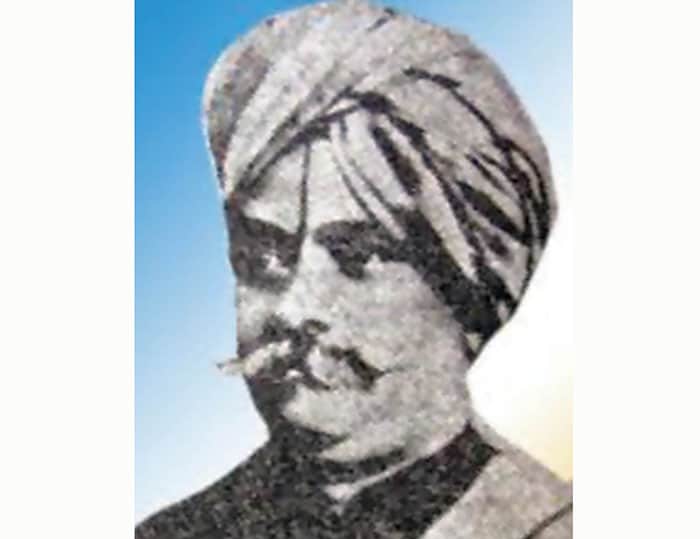
Though he was appearing in both the lead roles, Narasimhaiah was looking for a befitting person to fill in the place of Rangacharya. At this juncture, he saw A.V. Varadacharya, who became very popular in the later years, persuaded him to join his drama company and brought him to Mysuru. The very first play, “Shakunthala”, in which both of them appeared, became a hit. Varadacharya had played the role of the king, “Dushyanta”. However, after some time, Varadacharya returned to Bengaluru and Narasimhaiah had to take up the dual role again.
It was at this juncture, plague attacked Mysuru. While his drama company was at its height, the plague brought devastation in Mysuru, Bengaluru and other parts of Mysuru State. Narasimhaiah had no other option but to close his company. He went to Srirangapatna and began to recite Kumara Vyasa’s Bharata in the streets of that town for the sake of his livelihood. After persuasion by a relative, he came to Nanjangud and continued with Bharata Vachana, who became popular there also. However, dejection arose in life and began to wear the robes of Sanyasi. People began to address him ‘Yogishwara’.
Coming to know that plague had attacked Mysuru for the third successive year and people were dying in scores, he returned to his native city. He went to the assistance of the Government doctor, Achutha Rao, and began to serve the plague-affected. Seeing their hardship, he again took up to stage dramas and spent on the patients whatever he had earned. His dedicated service saved many lives and people admired Narasimhaiah for his selfless service.
On one such day of service, he became sick with the temperature rising. Those who had come out of plague because of the care by Narasimhaiah prayed for his survival. But fate had other intentions. Narasimhaiah became a victim of the plague a few days later. This renowned stage artiste and Gamaki was Gouri Narasimhaiah, one of the members of the Gouri Purohit family, who were priests in the Palace. He was my grandfather’s brother.



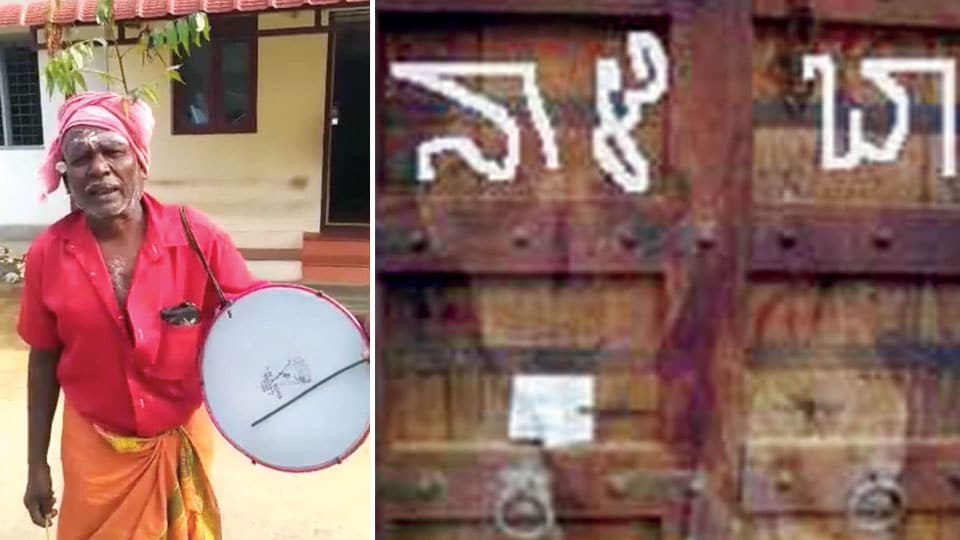

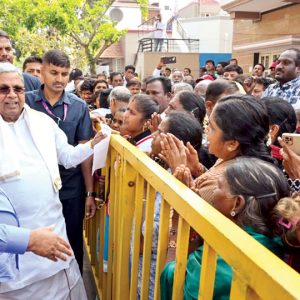
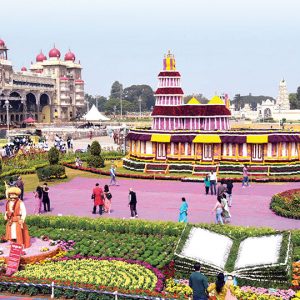
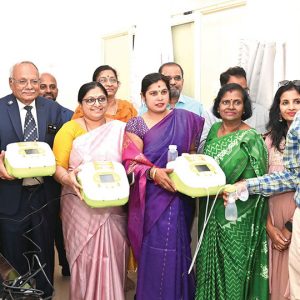
Very Informative article and laid out in a very interesting and nice pattern! Hope to read more such really informative past articles!
Dear Mr Sathya
I have to take an issue with you regarding this episode
“Seeing the havoc caused by plague, Urs told him about the uncertainties of life and said it was better to leave something for posterity for which he will be remembered. To this, young Vasudevacharya said what was there to be left, when they were gone. Urs asked Vasudevacharya, whom he called Vasu, to stop joking and compose kirtanas in his name as he had experience in music and good knowledge in Sahitya. It was the duty of a scholar like him to follow the path set by the elders and make use of his learning to do something for posterity and justice to his knowledge. May be, Urs added his name will also be remembered with Vasu’s work.
This conversation left a deep impression on Vasudevacharya and the result was the composition, “Chintayeham Janakikantamsantatam.”
Vasudevacharya was born in 1865, and went to learn the Carnatic music under Patnam Subramania Iyer who was living in Thiruvayyar in his teens, and was composing soon after his learning years , which was well before he reached his middle age. This I have heard from my father, who knew him well, after he returned from Thiruvayyar.
Vasudevacharya while learning from Patnam Subramnia Iyer , realised that his strength was as a composer of krithis rather than as a performer of them in Katcheris. He had immense knowledge of Tamil, Telugu and Sanskrit, had the depth of knowledge of Vyakarana,Vedas and scriptures. He grasped all his Guru had to offer in terms of music knowledge, and further enhanced his knowledge by attending Katcheris of that great performer Maha Vadyanatha Iyer , ofcourse clandestinely , as his Guru and the Iyer were rivals. Hence, it was a perfect fit for him as a composer. No one needed to tell him.
The episode , you refer to was in 1905, when Vasudevacharya was 40. By then, what I heard was that he was already well known as a composer. If he was not a composer in 1905, what was he doing, given that he was not an impressive renderer of krithis in Kacheris compared to his class mates like, Tiger Vardachar and Poochi Srinivas Iyengar, (the Guru of Ariyakudi Ramanuja Iyengar)? For composer of his genius, the age of 40 was too old and too late.
Hence, with due respect, I do not believe this episode you refer to.
“Today, our cities do not have the severe, unhygienic conditions as in the past, and yet, we seem to be in the same state today as then.”
Really? It requires some one who lived in 1940s Mysuru to compare the 1940s Mysuru and villages with say 1994 when the last bubonic plague appeared all over India.
The 1940s Mysuru , when I was groiwng up,and villages were not that populated considering that the population of India was less than a quarter of what it was in 1994. The 1940s Mysuru was clean, the municipality took care to sweep the streets, the councillors were living amongst us and really cared to keep their streets clean. Yes, we did not have the range of disinfectants, the technologies to deliver them, and the technologies need for intensive care etc.. But I had known only one, who had asthma or diabetes, as the air was not polluted with vehicles, and people walked to work or cycled to work.
The 1994 Mysuru during my visit looked appallingly unhygienic , people coughing and air was heavy with petrol fumes, footpaths were disappearing every where. I was the lone walker for 45 minutes when marauding vehicles were chasing me to kill, whenever I found the footpath ending and I was forced to avoid these vehicles. In 1940s, Rs 5 would have got more than a week’s worth of fresh vegetables and fruits. In 1994, I had to take Rs 10 bundles to buy the same quantity of vegetables and fruits. Mysuru had plenty of Kaveri water supply and we could clean our house, and water our garden. Mysuru was a nice, cool and environmentally friendly place.
“The article was very useful since we have been asking: How were epidemics fought then, how did people make collective decisions during a crisis?
Neem leaves bunch used to dangle at the entry of a house in a village to warn people, that there is an illnesses in that house. That was an effective quarantine sign. Yes, bevy paste and Turmeric pastes were used too. This did not mean that the isolation was effective, and from what I hear in 2020 Mysuru under Corona Virus attack, and the quarantine, that was not bad then. There were excellent Ayurvedic pundits. Their diagnosis by feeling and studying the pulse, giving their medicines which holistically mingled with a healthy diet regime, helped many of us.
If anything, people suffer from great many illnesses, brought on due to a variety of reasons. The lack of exercise, unhealthy diet, and polluted air are contributors.
“Today, our cities do not have the severe, unhygienic conditions as in the past, and yet, we seem to be in the same state today as then”
I do not agree India is hygienically better today. Th roads are congested with smoke-belching vehicles, people do not walk, and seeing the footpaths unoccupied, street vendors have usurped the footpath and have set up their stalls, people indulge in too much alcohol drinking, drugs use abound, and there is no awareness of prevention and healthy eating.
The bubonic plague visited in 1994, because the population of rats was at its highest number, which in turn means scattering of foods which the rats can help themselves and multiply etc..
India to day is the abode of 1.3 billion teeming humanity in crowded cities and villages. Hence, India is in the same state today as then, or even worse, looking at how the Corona Virus has spread through communities.
Dear Straneworld. Thanks for your first post on Vasudevacharya and the clarification. I have taken this episode from two books. One dedicates a chapter on Narasimhayya and this episode. I have to check from that book to correct myself or make sure of the date. But, I am in Bangalore, I can do that only after going to Mysore probably after this epidemic comes under control. Certainly, I will do it. Thanks again.
As regards the second one, I agree with you today’s Mysuru is not what it was in the 40s of 50s . But, in the article I am referring by the period of Mummadi Krishnaraja Wadiyar and during the early days of Krishnaraja Wadiyar IF Mysuru within the fortwalls was congested with narrow streets and poorly ventilated houses. That’s when Dewan Mirza Ismail planned Lakshmipuram, and one of two other Purams to remove this congestion and shift the families.
Dear Jalandhara, thanks for your comment. I have not referred to the condition in India. In the article, my reference is only about Mysuru.
@Sathya
What I said about India applied to Mysuru too.
@Gowri Sathya
Those books were wrong, if they said that Vasudevacharya started composing in 1905, when he was 40 year old.
That is why I said I will check the book after going to Mysore. We you said the writer himself might have committed the mistake.Thanks
It should read as you said…
@Gowri Sathya
Although Vasudevacharya lived to a ripe old age of 90s,in those days, men particularly did not see their 50th birthday. This and the fact that he had all the background necessary to become a composer, and the fact that his voice was not cut out to be a singer to enthral audiences for several hours, made him to realise that he was born to be a composer. His teacher, Patnam Subrmania Iyer was not a good katcheri performer of the same standard as his rival Maha Vadiyanatha Iyer, who lived in the same street at Thiruvayyar. But Patnam was a superb teacher. It is often said, that Vasudevacharya took this as an example, and delved deep into composing. He had his excellent Kavya , Vyakarana, Veda, Upanishad, and Music expertise, which he used early on to compose krithis. That was what I heard from my father’s friends who know him well, as his contemporary in Maharaja Sanskrit College, where he also served as a professor, as that college had music and ayurveda courses too then. That college had a rich suite of faculties that would shame even the University in which I studied in the West.
It was possible that that Urs did not know him as a composer already.
Thanks for the information, Strangeworld. Much obliged.